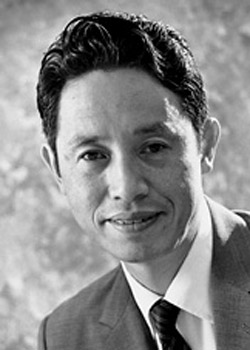tunnel diode
A tunnel diode, also called the Esaki diode, is a semiconductor device with a high impurity concentration and negative resistance over part of its operating range, used in amplifying, oscillating, and switching circuits. Its operation depends on quantum-mechanical tunneling of charges through a narrow p-n junction at zero voltage which ceases at increased forward voltages. The tunnel diode was first developed by Leo Esaki.
Leo Esaki (1925–)
 |
Leo Esaki is a Japanese physicist who developed the tunnel diode, a semiconductor which, as indicated above, allows electrons to cross normally impassable electronic barriers. Ivar Giaever extended Esaki's research to the field of superconductivity, which led to the prediction of the Josephson effect (electrical effects of a current flowing between superconductors). For this work, they shared the 1973 Nobel Prize in Physics with Brian Josephson. The tunnel diode has found extensive applications, which include its use in computer information storage.


